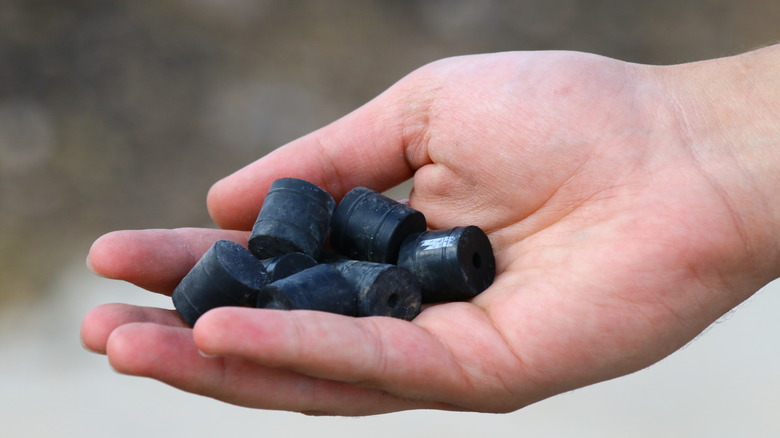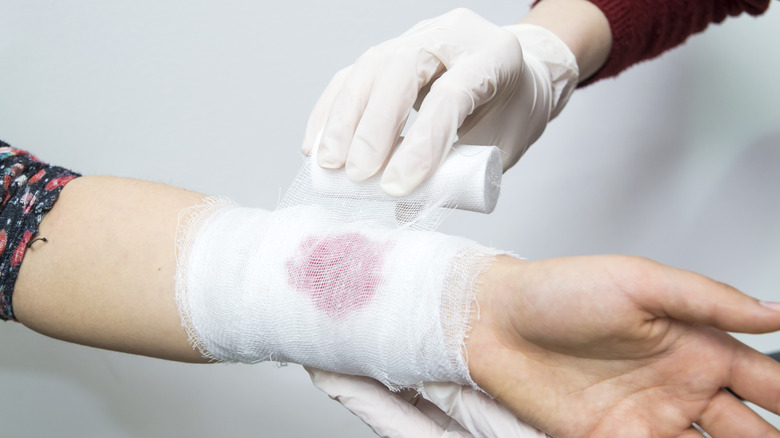When You Get Hit By A Rubber Bullet, This Is What Happens To Your Body
Rubber bullets are a type of projectile used by law enforcement agencies as a form of crowd control. Made from plastic, rubber, or a combination of rubber and metal, rubber bullets are solid pellets that can cause serious damage and permanent injury (via Health). The U.S. Department of Defense has categorized rubber bullets as non-lethal weapons designed to disperse crowds and temporarily incapacitate people. However, medical professionals have challenged this classification.
Although rubber bullets are less lethal than regular bullets, they are still dangerous and can significantly injure anyone they hit. According to a 2017 systematic review published in BMJ Open, rubber bullets can cause severe injury, permanent disability, and even death. In addition to bruising and swelling, rubber bullets can cause a wide range of injuries, including bone fractures, eye injuries and blindness, bleeding in the brain, organ damage, internal bleeding, and nerve and muscle damage. Of the 1,984 people studied in the review, 353 people either died or sustained permanent injuries from a rubber bullet strike.
How to treat a rubber bullet wound
If you get shot by a rubber bullet or any other type of projectile, you should seek immediate medical attention, regardless of the severity of your injury. Even if you think you only have a minor or superficial wound, you should still get evaluated by a doctor or medical professional (via Healthline). Some injuries, especially those to the head and neck, can get progressively worse over time. Delaying medical care could be life-threatening. Until you can be properly examined and evaluated by a medical professional, however, there are some things you can do to help treat and protect your wound in the meantime.
First and foremost, you should clean it with soap and water and apply an antibiotic ointment. This will help prevent the wound from getting infected. If your wound is actively bleeding, you should cover it with a clean piece of cloth and apply pressure. This will help stop or at least slow the bleeding. Depending on how much you're bleeding, you may need to use more than one piece of cloth. When the bleeding stops, you should continue to keep your wound covered and avoid any unnecessary physical activity as this could cause further damage and disrupt the healing process.


